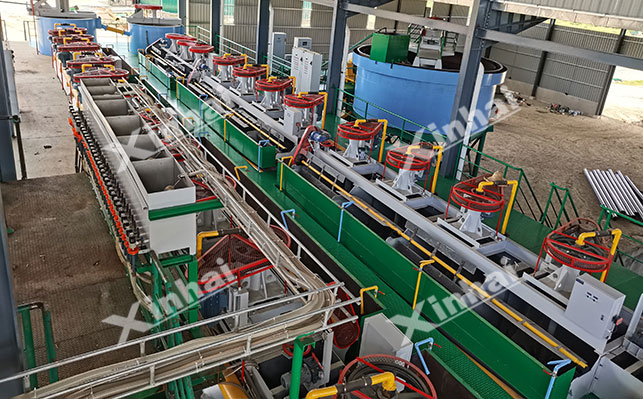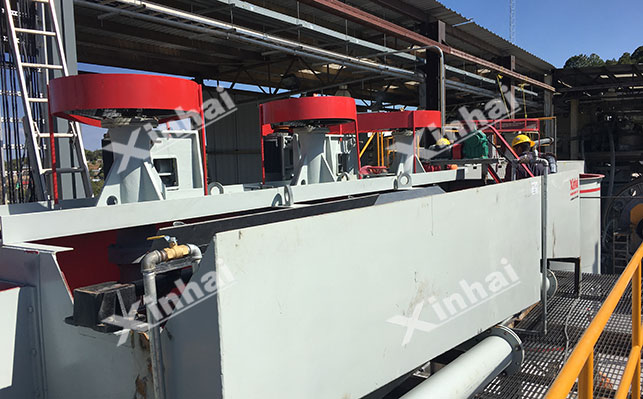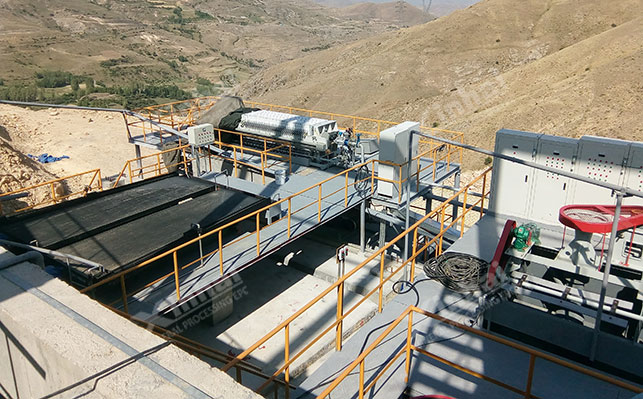
15311826613
Click to add WeChatCopper-nickel ore is an important strategic mineral resource in my country. However, copper and nickel minerals often coexist closely, have similar floatability, and exhibit complex and diverse ore types. For these types of minerals, beneficiation is quite challenging. Effective separation and comprehensive utilization of copper-nickel resources have always been key points and difficulties in the beneficiation field. This article will introduce the difficulties in separating copper-nickel ore and copper-nickel beneficiation separation methods.
Due to differences in mineral composition and occurrence state, copper-nickel ore types exhibit characteristic differences, mainly including three types: sulfide copper-nickel ore, oxide copper-nickel ore, and mixed copper-nickel ore. The difficulties restricting their separation efficiency are reflected in the following four aspects:
Small differences in floatability: Sulfide copper-nickel minerals have similar surface properties, with zero charge points all between pH 6 and 7. They have poor adsorption capacity for xanthate collectors and are prone to co-floating.
Fine-grained inclusions and intergrowth problems: Over 60% of copper-nickel minerals exist in fine-grained or intergrowth forms. For example, pyrrhotite is often encapsulated within chalcopyrite, forming intergrowth inclusions. Insufficient grinding conditions can lead to excessive intergrowth; while over-grinding produces fine mud, which easily adsorbs reagents and contaminates the concentrate.
Strong interference from associated minerals: Associated pyrrhotite is easily oxidized to produce Fe³⁺, S₂O₃²⁻, etc., raising the pulp potential to 300-400mV, disrupting the chemical environment for copper-nickel separation, and even catalyzing xanthate decomposition, reducing collection efficiency.
Complex Surface Properties of Oxide Ores: Copper-nickel oxide minerals have densely packed hydrophilic groups on their surface, exhibiting poor natural hydrophobicity. They readily combine with Ca²⁺ and Mg²⁺ in the ore pulp to form hydrophilic films, resulting in unstable activation effects from conventional sulfidation-flotation processes.
Depending on the type of ore, specific separation methods are required. Below, we introduce beneficiation methods for three types of copper-nickel sulfide ores, copper-nickel oxide ores, and mixed copper-nickel ores.
Based on the degree of ore symbiosis, copper-nickel sulfide ore beneficiation methods can be divided into three types: preferential flotation, mixed flotation, and potential-controlled flotation.

Preferred flotation: This method selectively suppresses one mineral using depressants and preferentially floats another mineral using collectors. It can be done in two ways: copper first, then nickel, or nickel first, then copper. For copper first, the pulp pH is usually adjusted to 8-10 with lime, and then cyanide is added to suppress pyrrhotite and pyrrhotite; butyl xanthate + ethyl thiocyanate is used to collect chalcopyrite. For nickel first, then copper, the pulp pH is controlled at 6-8, zinc sulfate + sodium sulfite is used to suppress chalcopyrite, and butyl xanthate + pine oil is used to collect pyrrhotite.
Mixed Flotation: This method first floats copper and nickel sulfides together to obtain a mixed concentrate. After de-reagent treatment, copper and nickel are then separated. Generally, under pH 7-9 conditions, pentyl xanthate and butylammonium black are used to collect all sulfide minerals to obtain a mixed concentrate. This concentrate is then concentrated and dehydrated, and residual adsorbents are added. After de-reagent treatment, lime is used to adjust the pulp to pH 10-11, cyanide is added to suppress nickel minerals, and copper concentrate floats out. Copper sulfate is added to the tailings to activate nickel minerals, and nickel concentrate is then floated out.
Potential-Controlled Flotation: This method controls the pulp potential to change the oxidation-reduction state of the mineral surface, thereby increasing the floatability differences between copper and nickel minerals. Typically, chalcopyrite readily forms a hydrophobic Cu-S film on its surface at low potentials (-300~-400mV), enhancing its floatability. Conversely, nickel pyrite oxidizes at high potentials (-100~0mV), forming a hydrophilic FeO(OH) film, decreasing its floatability. Therefore, flotation separation is achieved by altering the flotation point.
In oxide copper-nickel ores, nickel is often dispersed isomorphously within gangue minerals, making conventional beneficiation methods challenging. Effective separation of copper and nickel requires overcoming the strong hydrophilicity of the mineral surface and the difficulty of reagent adsorption. Three main methods are employed: sulfidation-flotation, chemical leaching, and roasting-flotation.

Sulfide-flotation: Sodium sulfide is used to convert the surface of oxidized minerals into a sulfide film, thereby enhancing the adsorption capacity of xanthate. During the process, the amount of sodium sulfide used needs to be adjusted according to the degree of mineral oxidation: 500-800 g/t for lightly oxidized minerals and 1000-1500 g/t for deeply oxidized minerals. Excessive use will generate HS⁻ ions, inhibiting the minerals. Sodium hydroxide is used to adjust the pulp pH to 10-12 to enhance the sulfide reaction. Butyl xanthate + oxidized paraffin soap is used as a collector to achieve effective separation of copper and nickel.
Chemical Leaching: There are two methods: sulfuric acid leaching and ammonia leaching. For sulfuric acid leaching, the sulfuric acid concentration is adjusted, the liquid-to-solid ratio is 3:1, the temperature is controlled at 60-80℃, and the leaching time is 4-6 hours. The leachate is then extracted with P204 to separate copper and nickel. For ammonia leaching, the pH is adjusted to 9-11, and the ammonia-ammonium salt system selectively dissolves copper and nickel, while the gangue remains insoluble.
Roasting-Flotation: High-temperature roasting converts oxidized minerals into easily floatable forms. This is divided into sulfide roasting and reduction roasting. For sulfide roasting, a measured amount of sulfur is added, and roasting is carried out at 600-700℃ in a reducing atmosphere to convert the nickel-magnesium silicate ore into NiS. The roasted ore is then ground and floated using xanthate. For reduction roasting, a measured amount of coke is added, and roasting is carried out at 800-900℃ to convert nickel oxide into metallic nickel, which is then directly collected using kerosene.
Mixed ores require the recovery of both sulfide and oxide minerals, often employing a combined flotation-leaching or gravity-flotation method.
Flotation-Leaching: Sulfide minerals are first recovered by flotation to avoid their loss during leaching; tailings are then chemically leached to recover oxide minerals, achieving full resource recovery. Flotation tailings undergo two-stage washing to remove residual reagents, and the washed tailings are then leached with sulfuric acid to remove oxide minerals.
Gravity-Flotation: Different gravity separation equipment is used to recover different particle sizes: jigs recover +2mm coarse particles, shaking tables recover -2mm to +0.074mm particles, and fine particles are directly floated.

The above is an introduction to copper-nickel ore beneficiation and separation methods. In actual beneficiation plants, the selection of process methods needs to be comprehensively considered in conjunction with ore characteristics, economic costs, and environmental protection requirements. It is recommended to conduct beneficiation tests first, and design a suitable process scheme through test analysis.